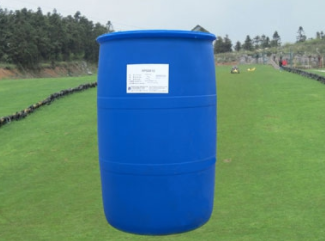Biosurfactants are the secondary metabolites of some microorganisms (bacteria, fungi, yeasts, etc.), which are accumulated in the culture solution in large quantities, causing significant changes in the surface tension, critical micelle concentration and other physical and chemical properties of the culture solution. Researchers usually use high-density fermentation method to make the content of Biosurfactant in the culture liquid reach a large level, and then obtain the finished product of surfactant through separation and purification, which has been applied in environmental pollution treatment and other aspects, and achieved good results.

Biosurfactants not only have the characteristics of general chemical surfactants (solubilization, emulsification, reduction of solution surface tension, etc.), but also have some special chemical properties, such as acid-base stability, thermal stability, antibacterial performance, etc.
Biosurfactants can significantly reduce the surface tension of solutions, and this parameter is suitable for quantitative characterization of surfactant content. Angeles et al. Studied the chemical properties of rhamnolipid, a metabolic by-product of Pseudomonas degrading phenanthrene, which can reduce the surface tension of pure water from 72.3 Mn / m to 18.7 Mn / m.
Critical micelle concentration (CMC) refers to the low concentration of biosurfactant molecules when they associate in a solvent to form micelles. When the solution reaches the critical micelle concentration, the surface tension of the solution decreases to a low value. At this time, if the concentration of surfactant is increased, the surface tension of the solution will not decrease but form a large number of micelles, which is not conducive to the role of surfactant. Li Jing et al. Found that the cmc value of cyclic lipopeptide biosurfactants was 0.139g/l. At this time, the surface tension of pure water was reduced from 72.3mn/m to the low value of 29.9mn/m. If the concentration of biosurfactants was further increased, a large number of micelles would appear in the solution.
Biosurfactants also have good emulsifying properties and stable emulsifying properties. Zhang Qiuzhuo et al. Produced rhamnolipid biosurfactant by a Pseudomonas aeruginosa strain, which not only reduced the surface tension of fermentation broth from the initial value of 70.3 Mn / m to 34.2 Mn / m, but also maintained good emulsification stability within 240h.
In addition, biosurfactants show better properties than chemical surfactants in acid-base stability, thermal stability and antibacterial performance. Hu Shencai et al. Produced lipopeptide biosurfactants by a Pseudomonas sp. the surface tension was relatively stable in the range of pH 2.0-10.0; The surface tension has no obvious change in the temperature range of 20 ~ 120 ℃, and it can withstand the high temperature of 120 ℃ for 2h, with strong high temperature tolerance. Swaranjit et al. Produced rhamnolipid M7 mixture by Pseudomonas aeruginosa at10. In the concentration range of 16-32 mg / L, this mixture has strong anti fungal activity.